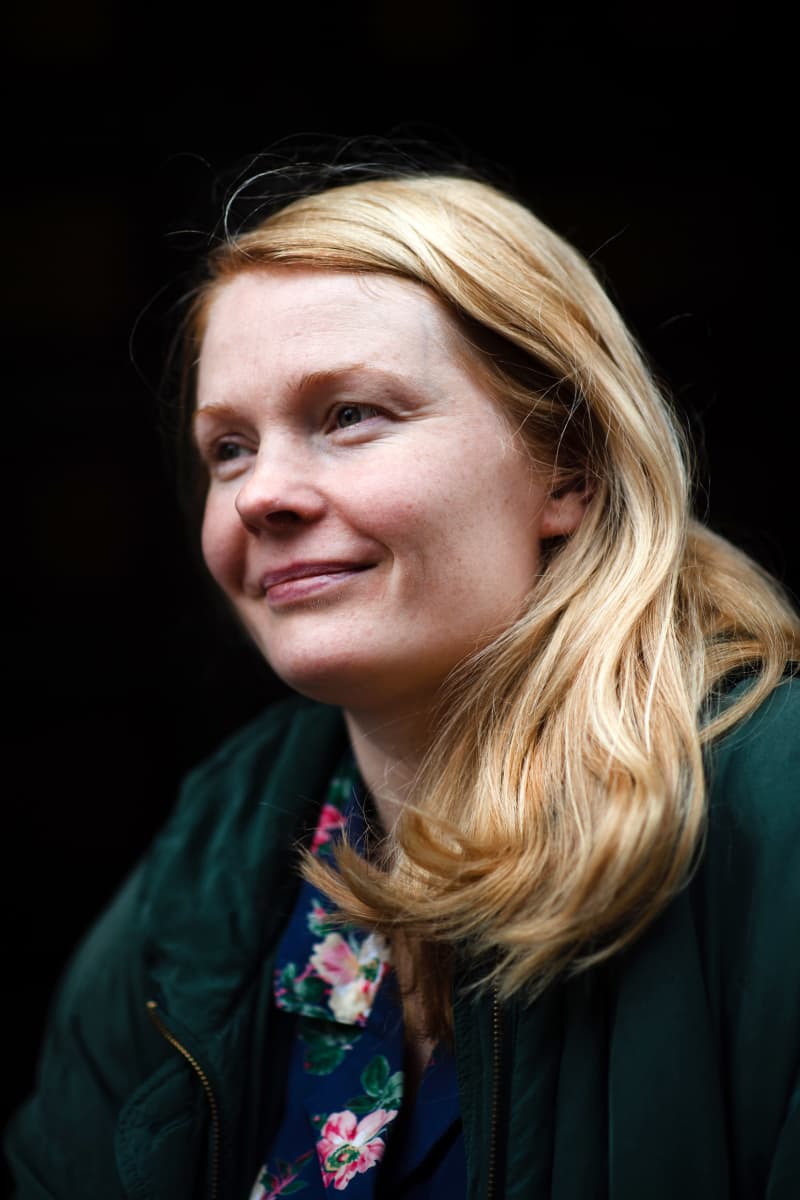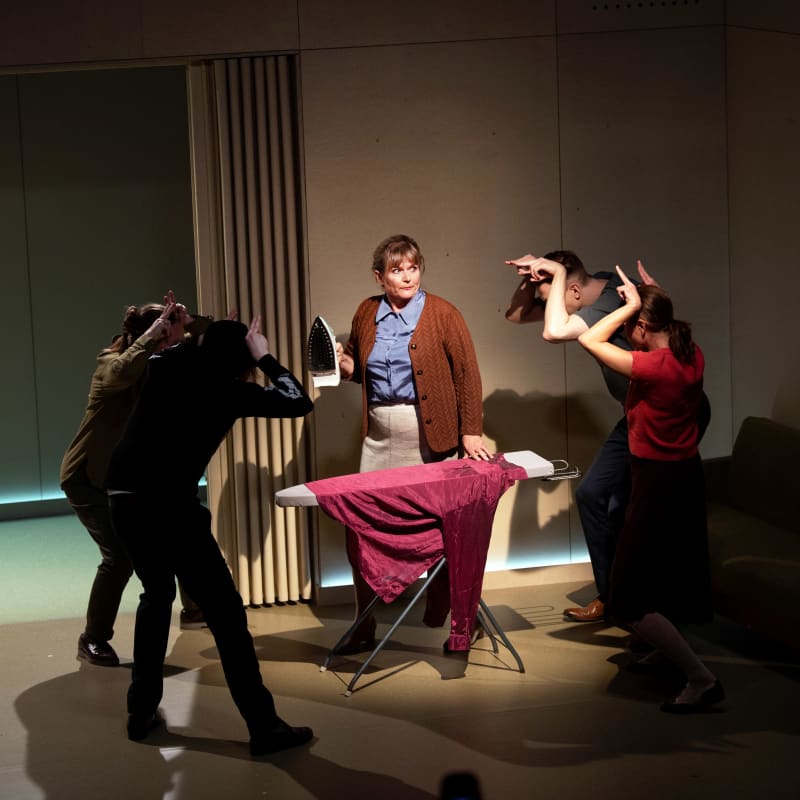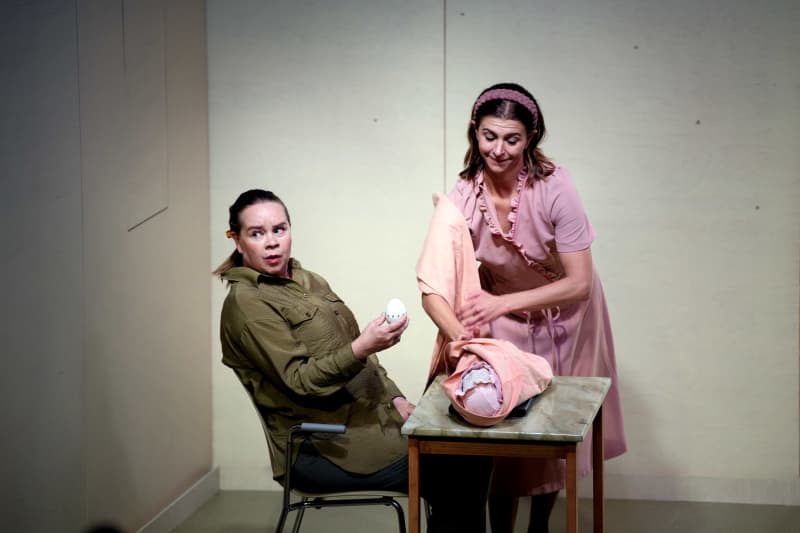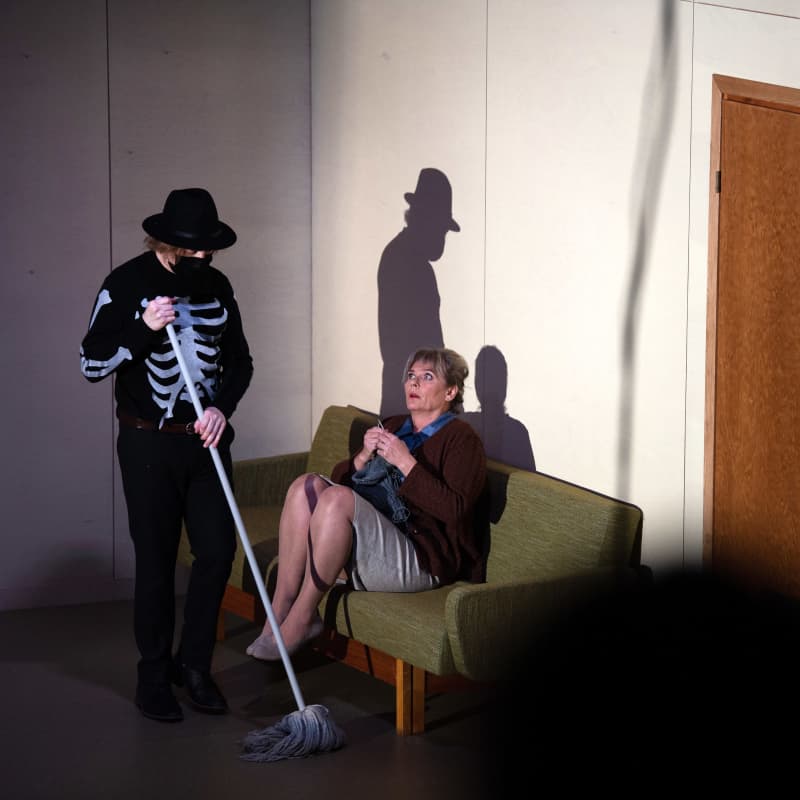Directed and written by Saara Turunen, Fruits of the Mind concludes Q Theatre’s trilogy of performances. The award-winning author has created a theatrical language in which speech takes a back seat.
It’s hard to imagine a more dreary room on the stage. It is extremely sparsely furnished and light in tone. At the back of the room is an accordion door that opens. A stork appears in the space behind it.
Various bells and whistles are ticking and chiming.
The egg timer must be protected. Time can run out, you grow old, death lurks on your heels, your oocytes give up the ghost, in therapy you have to solve problems within an hour.
Observing time makes sense, but at the same time it is spent cleaning just the right way, dressing the right way, eating the right way.
To be businesslike.
Control and internalized normative behavior are expected, but not everyone is always capable of it.
– Here, there is a lot of counter-play between unrestrainedness and restraint. There is a lot of material where the body is shackled, we are in the woods and we are disciplined. Then there are cracks where physicality and unrestrainedness are unleashed.
The worst thing is to be embarrassed
While Steinbeck pondered how capitalism destroys the country and people, he examines how difficult it is for the body and mind to live together under the rule of rules and surprisingly strict customs.
– The word fruit in particular fascinated me in Steinbeck’s book. It felt like it was connected to the body. Then I thought that everything related to rationality is also related to corporeality. They seemed like opposites of each other, Saara Turunen reflects.

discusses how reasonable it is to restrain oneself and especially one’s emotions. In a relationship, it makes sense to have sex under the covers. Don’t eat too much cake, and don’t take it first.
The worst thing is to be embarrassed. It’s wise to keep your impulses in check so you don’t mess up.
Must not be an animal.
But if physicality and the needs of the body are denied all the time, it can lead to irrational things from an individual’s point of view, Turunen states.
– I was interested in the hidden world, the world of dirt and shameful feelings, which one always tries to keep out of sight, but which inevitably bursts forth in human life.
As in Turunen’s other works, there is also a strong feminist perspective. Despite the illusion of equality, a woman is expected to be restrained in her sexuality, eating and appearance.
Another woman who has internalized misogyny and the part reserved for women can also be a wolf to a woman. You have to know how to be pretty if you’re a girl, Turunen sums up.
– For example, I myself have been brought up to restrain myself and be reasonable precisely because I am a woman – or I was a girl. A certain kind of cleanliness has always been a woman’s best commodity. If the purity is gone, then the face is gone. Even though we have moved on from the state society, the old values \u200b\u200bstill speak. If a woman dances too wildly, that’s a problem.

If you act against reason, punishment often follows. Shame at least.
The punishment is not necessarily imposed by the community, but by the individual himself.
– How to behave at funerals or birthdays is built into us. The animal must be kept away from the human because we don’t want to break the social code. We want to be accepted, we want to avoid shame.
Actors do not get off easy
As in the previous parts of Saara Turunen’s trilogy, there are only a few lines.
The visual world is extremely reduced and at the same time saturated with symbols. The expression is sometimes extremely sparse, sometimes recklessly physical.
The form of the performances is strict, every sound, gesture and movement carries meaning. Humor arises from recognition, from situations that most of them have experienced themselves or at least witnessed.
The collage-like illustrations leave room for the viewer’s interpretations. Turunen thinks it’s enchanting.
– In the previous works, the viewers have had completely opposite views of what the events on the stage mean, perhaps due to their own personal history. It’s endlessly interesting and completely allowed. There is no correct interpretation.

– The work is extremely precise. You might think that it locks the actor in, when here there are very strict boundaries within which the acting takes place, and there is very little text. Then a paradox is realized, where it becomes terribly rewarding to realize how much can be achieved with little.
According to Rajamaa, Turunen’s way of making theater is different from all the other directors he has worked with. It doesn’t make it easy for the actor, but Rajamaa doesn’t like it either.
– Acting under Turunen’s direction is still difficult, but extremely great. When something falls into place after a long training session, you realize that everything can depend on 30 cents: whether you are in the right light, or whether you say your two-word lines with just the right tone of voice. The whole meaning can change with an incredibly small change.

challenges both the author and the viewer to think about where their own boundaries are, Turunen says.
– A person has to ask how to overcome that shame, and how to let go of it. While making the work, we have thought about whether there can be a happy ending, or whether it is even possible to tear back the curtain to a world where shame would not be so actively present all the time.
What good could come from silencing the voice of reason a little?
– That could lead to more freedom.





